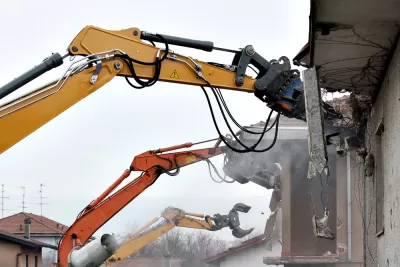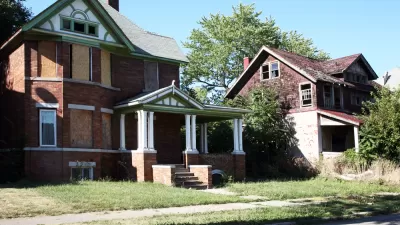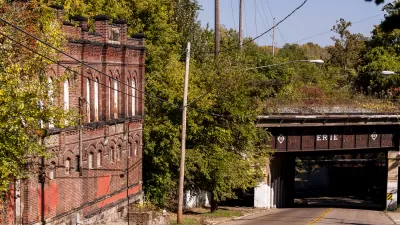Proposal N, on the ballot for Detroit voters next week, will provide $160 million in bond funding for demolitions and $90 million to mothball homes for future rehab, but, according to this opinion, it won't solve the city's blight challenges.

[Updated November 3, 2020] Eric Kehoe, provides commentary on Proposal N, which will appear before voters in the city of Detroit on Tuesday as a piece of the city's response to the vacant properties in the city by approving a "taxpayer-funded bond measure that would primarily pay to demolish vacant properties in the city."
Kehoe writes on the subject as an urban planner, former president of Preservation Detroit, and a founding member of Detroiters for Parking Reform, suggesting that a regional approach to blight and vacancies might be effective at solving Detroit's problems. First of all, Proposal N won't solve blight, according to Kehoe, because demolitions don't necessarily work as a catalyst for new development:
The idea that “if you clear it, they will build” hasn’t been backed up elsewhere, either. Research by Jason Hackworth shows that demolition-only policies have left 269 Rust Belt neighborhoods — including some in Detroit — segregated and value-depressed, often leading to further decline.
To explain why demolition doesn't necessarily seed reinvestment in Detroit specifically, Kehoe points to the effects of sprawl:
As land in Detroit neighborhoods continues to sit vacant, it’s overly optimistic to think that a focus on demolition will tip the scale for redevelopment. The underlying issue is a sprawling regional footprint that continues unabated. And that sprawl is linked to discrimination in our region.
Even if Detroit voters approve Proposal N, the city's vacant properties and blight problem will remain, according to Kehoe, and an unprecedented regional approach is necessary to solve these challenges.
"To curb sprawl, municipalities could work together to create greenbelts or urban growth boundaries to limit the development of new land. Passing a regional transit plan would help shift the population’s reliance on cars, encouraging compact redevelopment along public transit corridors," writes Kehoe
FULL STORY: Detroit shouldn't have to tackle blight alone. Look for a regional solution.

Alabama: Trump Terminates Settlements for Black Communities Harmed By Raw Sewage
Trump deemed the landmark civil rights agreement “illegal DEI and environmental justice policy.”

Study: Maui’s Plan to Convert Vacation Rentals to Long-Term Housing Could Cause Nearly $1 Billion Economic Loss
The plan would reduce visitor accommodation by 25% resulting in 1,900 jobs lost.

Why Should We Subsidize Public Transportation?
Many public transit agencies face financial stress due to rising costs, declining fare revenue, and declining subsidies. Transit advocates must provide a strong business case for increasing public transit funding.

Paris Bike Boom Leads to Steep Drop in Air Pollution
The French city’s air quality has improved dramatically in the past 20 years, coinciding with a growth in cycling.

Why Housing Costs More to Build in California Than in Texas
Hard costs like labor and materials combined with ‘soft’ costs such as permitting make building in the San Francisco Bay Area almost three times as costly as in Texas cities.

San Diego County Sees a Rise in Urban Coyotes
San Diego County experiences a rise in urban coyotes, as sightings become prevalent throughout its urban neighbourhoods and surrounding areas.
Urban Design for Planners 1: Software Tools
This six-course series explores essential urban design concepts using open source software and equips planners with the tools they need to participate fully in the urban design process.
Planning for Universal Design
Learn the tools for implementing Universal Design in planning regulations.
Smith Gee Studio
Alamo Area Metropolitan Planning Organization
City of Santa Clarita
Institute for Housing and Urban Development Studies (IHS)
City of Grandview
Harvard GSD Executive Education
Toledo-Lucas County Plan Commissions
Salt Lake City
NYU Wagner Graduate School of Public Service





























